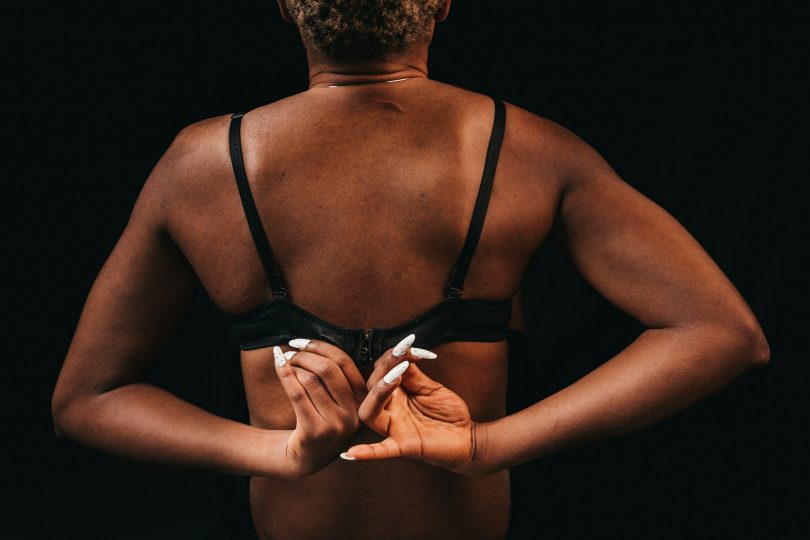I didn’t truly grasp what people with breast cancer endure—especially those who undergo mastectomy—until I encountered Ericka Hart’s story in 2019. Diagnosed with bilateral breast cancer and undergoing a double mastectomy, Ericka, a Black cancer survivor, continues to embody resilience. She has flourished as a sex educator, activist and performer, and challenging norms and redefining visibility.
According to the National Library of Medicine, breast cancer often brings anxiety, depression, and profound stress. When the treatment involves a mastectomy, it introduces a new layer of trauma few are emotionally prepared for. The physical and emotional pain don’t end with the surgery, especially in the Black community, where a woman’s breasts are not just for breastfeeding. For us, they are a symbol of femininity, beauty, fertility, sexuality, and aesthetic display, often linked to the attraction of male suitors.
Many Black women face unique pain and trauma after mastectomy due to cost, lack of insurance, and healthcare disparities that limit access to reconstruction, pressured decisions made without counseling, lack of representation in media, and a higher incidence of aggressive cancers.
That’s why we’ll be focusing on the impact of mastectomy, the options you have afterward, and why support matters.
The Emotional Impact of Reconstruction on Self-Esteem
According to Grandville Medical and Laser, reconstruction after mastectomy offers women a renewed hope of recovery, healing, and normalcy. Many women can now face the mirror confidently and engage socially without any feeling of self-consciousness. Unfortunately, this doesn’t always apply to Black women, as they face more barriers to reconstruction post-mastectomy. Reasons for these disparities include:
- Less information is provided about reconstruction options
- Later-stage diagnosis reduces eligibility for reconstruction
- Limited access to plastic/reconstructive surgeons
- Insurance and financial barriers (uninsured or underinsured)
- Cultural and medical concerns (eg, scarring, keloids, outcome representation)
- Poor communication and advocacy gaps with providers
- Systemic inequities in healthcare and insurance coverage
However, it’s important to recognize that reconstruction is not the only path to healing. Ericka Hart chose not to pursue it. Like her, many women find comfort in going flat or using prosthetics. They embrace their bodies with pride, joy, and confidence, redefining beauty on their own terms.
The emotional impact of a mastectomy varies, but one thing is key: your choices should not reflect your comfort, values, and vision for yourself—not anyone else’s expectations.
Although women who undergo reconstruction after breast cancer treatment feel more whole, Cancer Research UK and the Cleveland Clinic report that reconstruction can come with:
- Additional surgeries
- Scars
- Blood clots
- Fat necrosis
- Unequal breasts
- Loss of sensitivity of the breast
- Extra time for recovery
Some women reclaim their self-esteem and strength by boldly embracing their new bodies without seeking reconstruction. If you do choose reconstruction, remember to ask about the above possible side effects.
Choosing Between Reconstruction, Prosthetics, or Going Flat
Choosing what comes next after a mastectomy is deeply personal. There’s no one-size-fits-all answer—only what feels right for your body, your healing, and your values. Here are three common paths, each with its own considerations:
- Reconstruction: It can restore the shape of the breast, but you’ll need to consider the cost, potential side effects
- Prosthetics: It is an external breast form worn in a bra. It is far less harmful, more affordable, and can be replaced. Here’s one that comes highly recommended: Vollence Silicone Breast Forms Fake Boobs for Mastectomy Prosthesis
- Going Flat: This option is for women who have accepted their new bodies as they are. It means going without construction, which is comfortable and reduces medical risk
- Hybrid Approach: Some women combine options—using a prosthetic occasionally and going flat most days; or, reconstructing one breast and leaving the other flat.
Cultural and Community Perceptions of Femininity
In the Black community, femininity is often tied to a woman’s physical appearance, and her breasts are significant to this perception. In many of our cultures, the breast is a symbol of motherhood and womanhood. In some instances, women with more petite breasts are found less attractive.
Now, imagine how a woman without boobs feels in our community after a mastectomy. Stigma, questions, and insensitive comments are some things she will deal with for most of her life. Again, Hart is one woman from whom we can take cues. She found empowerment in going flat, challenging traditional beauty standards that link womanhood strictly to body shape.
She embodies our cultural pride of resilience and survival, reshaping her scars as a strength trademark. The key message from her story is that our breasts do not define our femininity, but our self-love, confidence, and inner beauty. And as a community, this message is vital for breast cancer survivors to heal emotionally.
Coping Strategies for Body Changes
While no one can fully understand both the physical and emotional pains that breast cancer survivors endure, those who have faced their own share of hardship may offer meaningful support. Healing often begins with resources like:
- Support groups. Safe spaces for connection, shared experiences, and emotional validation
- Therapy. Professional guidance to navigate grief, identity shifts, and mental health challenges
- Self-care. Intentional practices that nurture the mind, body, and spirit.
Beyond these, healing requires a great deal of patience, self-acceptance, and confidence, which, in many cases, may take time to rebuild.
The Role of Partners, Family, and Social Interactions
Because society often ties a woman’s beauty to her breasts, among other physical features, many partners may feel a loss of attraction, leading to reduced intimacy. According to Northwell Health, women usually feel vulnerable and lonely after breast cancer treatment.
Therefore, it is important that the partners affirm beauty beyond appearance, which can help boost confidence in Black women. Similarly, family members should avoid stigmatizing comments and work together to create a safe and supportive environment that facilitates emotional healing.
And very importantly, social interaction plays another vital role. Our community needs to take deliberate action in educating members about respecting women’s choices, be it reconstruction, prosthetic, or going flat. At Elevate Black Health, we believe that our actions can make or mar survivors of breast cancer in the Black community. It’s time to reduce judgment and foster inclusiveness to have more women like Ericka Hart.
Want to dive deeper into this topic? Check these additional resources:
- Ericka Hart on Instagram. https://www.instagram.com/ihartericka/?hl=en
- Assessment of Depression and Anxiety in Breast Cancer Patients: Prevalence and Associated Factors. https://pmc.ncbi.nlm.nih.gov/articles/PMC6103579/
- How to Address Body Image Concerns in Patients with Breast Cancer. https://www.capc.org/blog/how-to-address-body-image-concerns-in-patients-with-breast-cancer/
- Reconstructive Surgery for Cancer Patients: Breast Reconstruction After Mastectomy. https://gml.com.ng/reconstructive-surgery-for-cancer-patients-breast-reconstruction-after-mastectomy/
- Breast Reconstruction in Women of Color: Tips for Getting the Care You Deserve. https://www.breastcancer.org/treatment/surgery/breast-reconstruction/women-of-color
- Possible problems with breast reconstruction. https://www.cancerresearchuk.org/about-cancer/breast-cancer/treatment/surgery/breast-reconstruction/possible-problems
- Breast Reconstruction. https://my.clevelandclinic.org/health/treatments/16809-breast-reconstruction
- The emotional impact of breast cancer and reconstruction. https://www.northwell.edu/plastic-surgery/expert-insights/emotional-impact-of-breast-reconstruction








